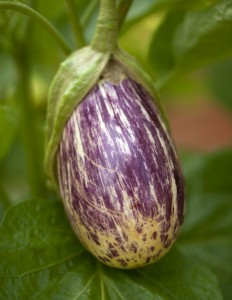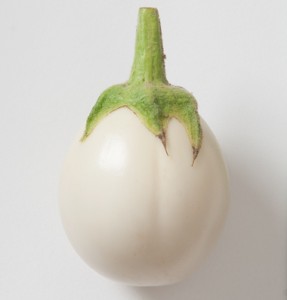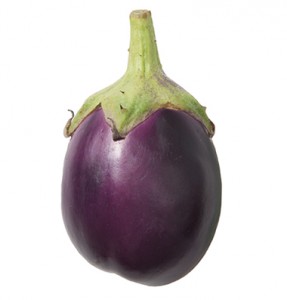A New Season’s Tasty Treats
Posted in Gardening Tips on January 28 2014, by Sonia Uyterhoeven
Sonia Uyterhoeven is the NYBG‘s Gardener for Public Education.

This is the time of year when gardeners like to cruise the seed catalogs looking for something new, hoping to create a renewed palette of edibles for their garden in the coming months. For those of you that like to delve into the world of vegetables, there are a few fresh faces on the market representing a favorite of mine that’s as good fried on its own as it is stealing the spotlight from chicken parmesan.
Today I thought I would give you a glimpse into some of the new offerings on the market to whet your appetite for the upcoming gardening season. On the eggplant scene, Johnny’s Select Seeds is offering two new Indian types this year—‘Suraj’ and ‘Raja’.
Both ‘Suraj’ and ‘Raja’ are small eggplants that average 2 ½ – 3 inches long and 2 inches wide. ‘Raja’ is a white eggplant while ‘Suraj’ is a pretty, medium to light purple. The plants are compact and high-yielding. Due to the diminutive size of the eggplants, this new duo is recommended for stuffing.

There are many different types of eggplants on the market these days and you can find them in farmers markets, high-end grocery stores, and a variety of cultural markets. Indian eggplants tend to be small, egg-shaped, and about 1/2 to 1/3 the size of an average eggplant, with medium-thick skin and a sweet, creamy flesh. Food writer Marc Bittman recommends stuffing them with sesame seeds, turmeric, cayenne pepper, garlic, cilantro, and ground, unsalted peanuts. He first fries the eggplants, then steams them in a skillet for 15-20 minutes. Definitely a recipe to try—it looks and sounds exceedingly delicious.
I’m also a big fan of white eggplants, as they tend to be buttery and don’t have that bitter edge that is common in purple eggplants. In the latter, that bitterness can be a native quality or a product of maturity. As the eggplant matures, the seeds form, which are often the culprit behind that bitter taste. The small, round, green Thai eggplants are the most bitter of the bunch, so make an effort to remove the seeds before you add these eggplants to your next curry.

These Indian eggplants are something I think will be worth trying for anyone who’s a fan of the edible nightshade. Last year, I was enamored with Japanese and Chinese eggplants, which are skinnier than classic eggplants, slightly more tender, and less bitter. I tossed them in the frying pan with some olive oil and garlic and they were buttery and delicious.
Just remember: eggplants are warm weather lovers. Of all the vegetables that I grow, I notice that eggplants are among the fussiest if you try to plant them outside too early in the season. I usually start the seeds indoors, 8-10 weeks before my outdoor planting date, which falls at the end of May or beginning of June.
‘Raja’ and ‘Suraj’ eggplant photos courtesy of Johnny’s Select Seeds.

